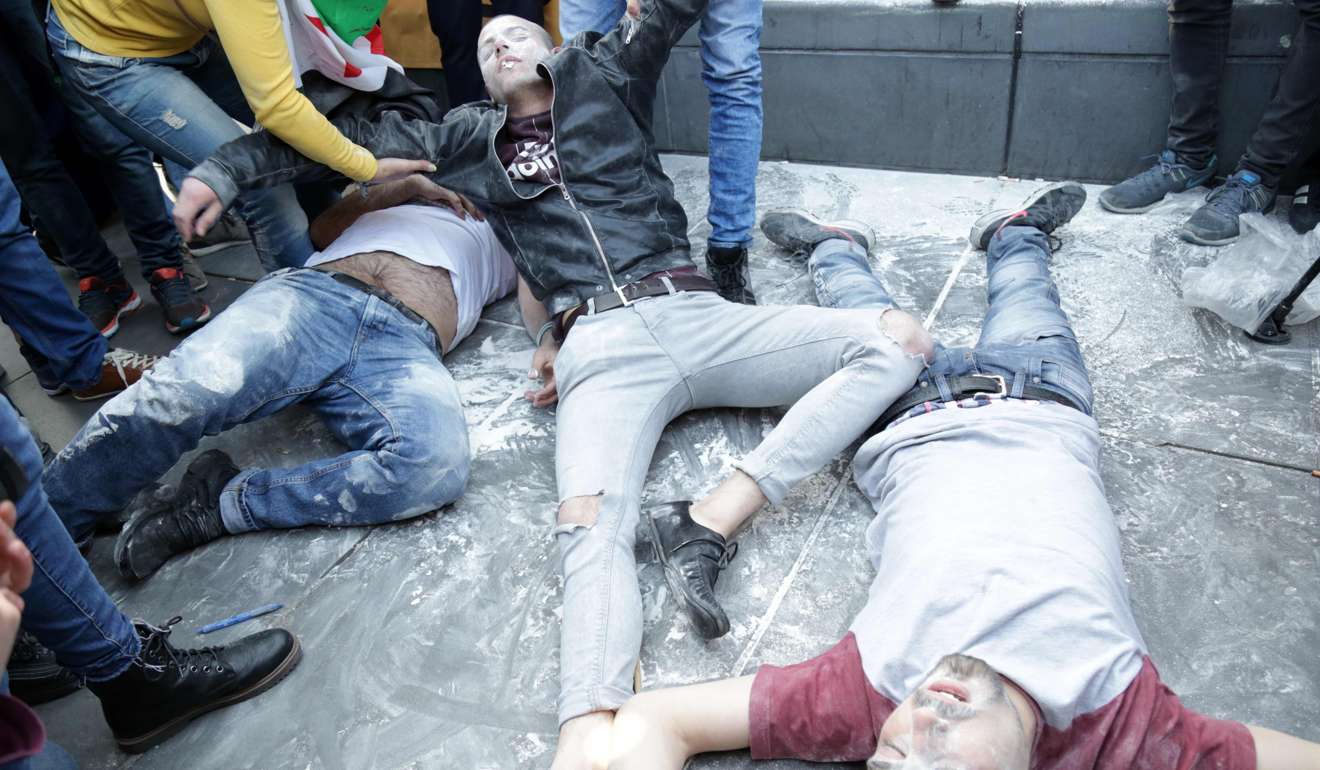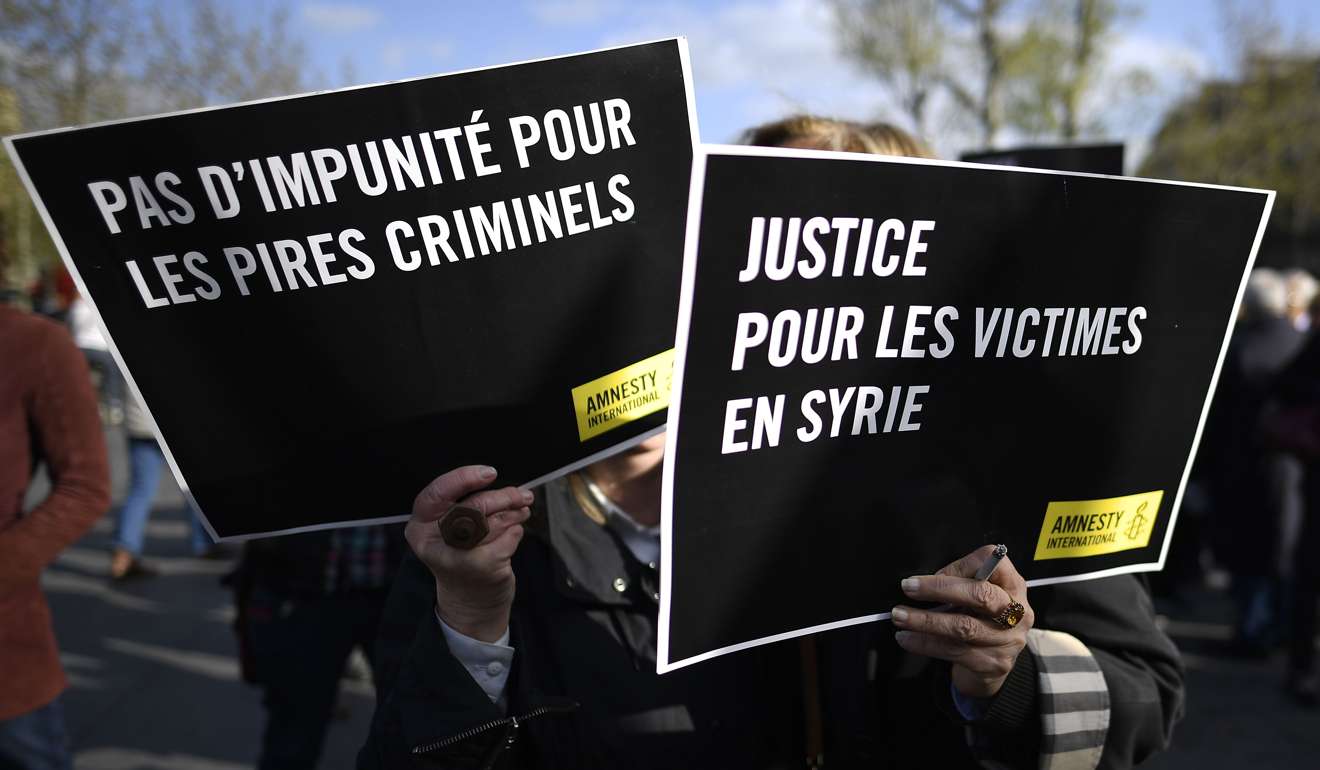
Syrian scientists made sarin used in chemical attacks, France claims
France says that since 2014, Syria has sought to acquire dozens of tonnes of isopropanol, a key ingredient of sarin, even though it committed to destroying its chemical arsenal in October 2013
The new evidence – contained in a six-page National Evaluation prepared by French intelligence – represents the most detailed public account of Syria’s alleged use of the deadly nerve agent sarin in the attack on the town of Khan Sheikhun.
The French report casts fresh doubts on the efficacy of what at the time was billed as a landmark US-Russian chemical weapons pact – signed by then US Secretary of State John Kerry and Russian Foreign Minister Sergei Lavrov in late 2013 – that was touted as practically eliminating Syria’s “declared” chemical weapons programme. France also said that since 2014, Syria has sought to acquire dozens of tonnes of isopropanol, a key ingredient of sarin, even though it committed to destroying its chemical arsenal in October 2013.
“France assesses that major doubts remain as to the accuracy, exhaustiveness and sincerity of the decommissioning of Syria’s chemical weapons arsenal,” the paper stated. “In particular, France assesses that Syria has maintained a capacity to produce or stock sarin, despite its commitment to destroy all stocks and capacities.”

The French findings – based on environmental samples collected in the town of Khan Sheikhun and blood samples taken from a victim on the day of the attack – bolster claims by the United States, Britain, Turkey and the Organisation for the Prohibition of Chemical Weapons that sarin had been used at Khan Sheikhun.
But the French account goes further, claiming that the strain of sarin used in the attack on Khan Sheikhoun was identical to sarin samples collected in a previous Syrian government attack on the town of Saraqib on April 29, 2013. Following that attack, France obtained an intact, unexploded grenade containing 100ml of sarin.
The chemical explosive, which was dropped by a helicopter, “was used with certainty by the Syrian regime during the Saraqib attack”, according to the French paper, which was made public in Paris on Wednesday by French Foreign Minister Jean-Marc Aryault.

An examination of the grenade showed traces of the chemical hexamine, a key signature of the Syrian chemical weapons programme. The Syrian Scientific Studies and Research Centre, the regime’s chemical weapons incubator, developed a process to add hexamine to the two key ingredients of sarin – isopropanol and methylphosphonyl diflouride-to stabilise it and improve its effectiveness, according the French account.
“The sarin present in the munitions used on 4 April was produced using the same manufacturing process as that used during the sarin attack perpetrated by the Syrian regime in Saraqib,” according to the French paper. “Moreover the presence of hexamine indicates that this manufacturing process is that developed by the Scientific Studies and Research Centre for the Syrian Regime.”
“This is the first open confirmation from a national government that hexamine is used by the Syrian government in the manufacture of sarin, confirming a hypothesis that had been circulating for over three years,” said Dan Kaszeta, a London-based chemical weapons expert and former U.S. Army Chemical Corps officer, who said that hexamine has not been found in other countries’ sarin programmes.

“The presence of hexamine,” he added, “ties all of these sarin incidents together, and it ties them firmly to the Syrian government.”
The Syrian research centre, or SSRC, was established in the early 1970s to secretly develop chemical weapons and other unconventional weapons. As far back as the mid-1980s, the CIA claimed that the Syrian regime was capable of producing nearly eight tonnes of sarin per month.
The Trump administration – which has disclosed little evidence to back claims that Syria was behind the Khan Sheikhoun attack – this week imposed sanctions on 271 employees of the SSRC in retaliation for the attack.
The Syrian regime has denied that it has ever used sarin, or any other chemical weapons. Syria’s chief backer, Russia, claims that the release of chemical agents in Khan Sheikhun was the result of a Syrian air strike against an opposition warehouse containing chemical weapons.
But the French paper challenges that account, saying the “theory of an attack by the armed groups using a neurotoxic agent on 4 April is not credible. ... none of these groups has the capability to employ a neurotoxic agent, or the air capacities required.”

